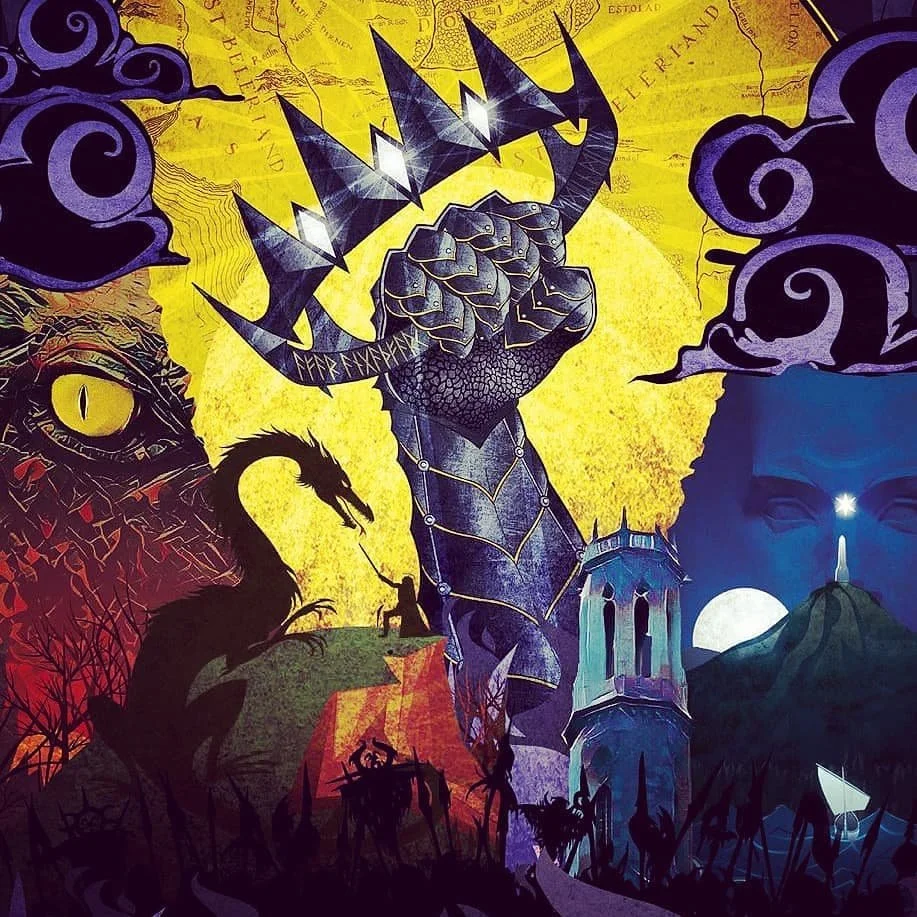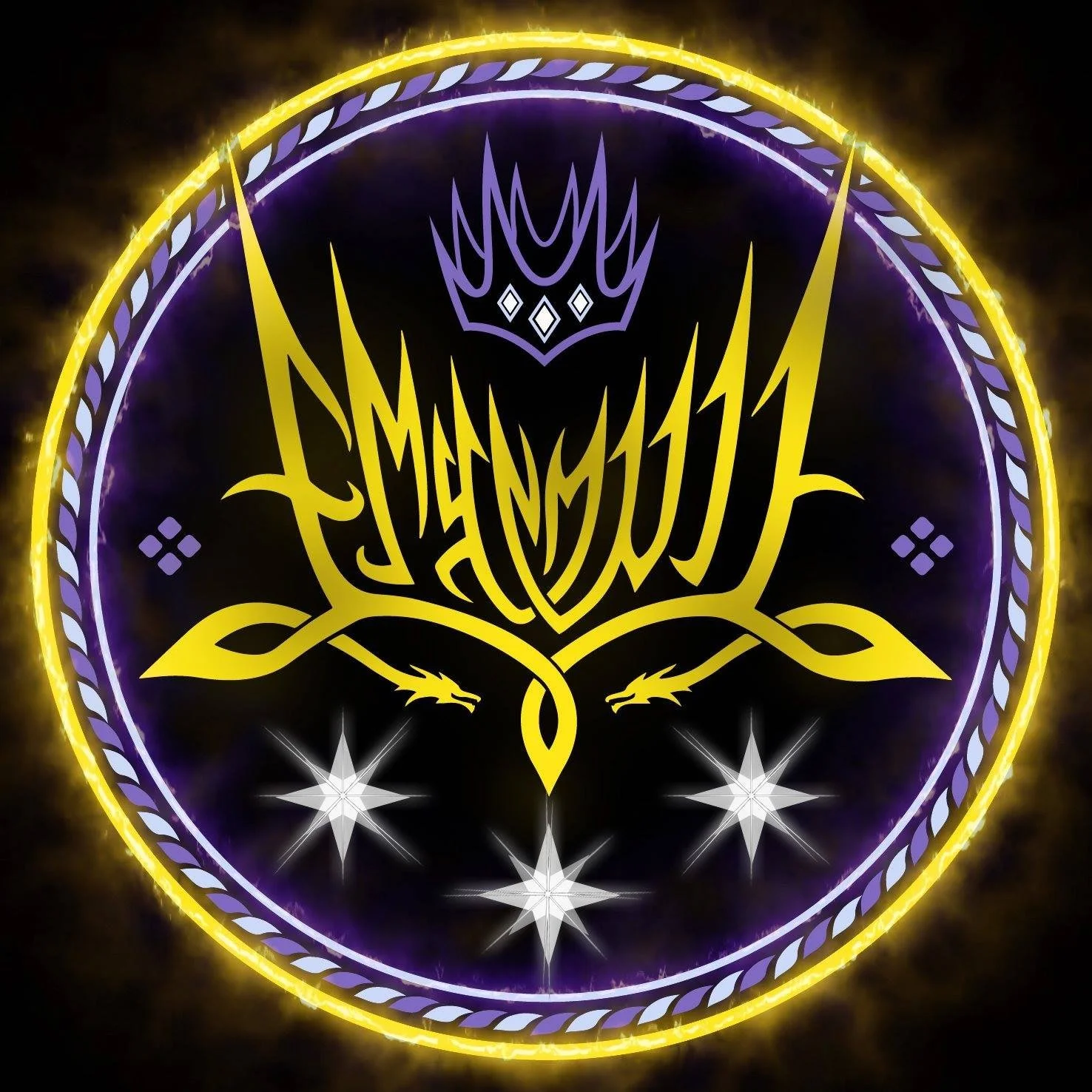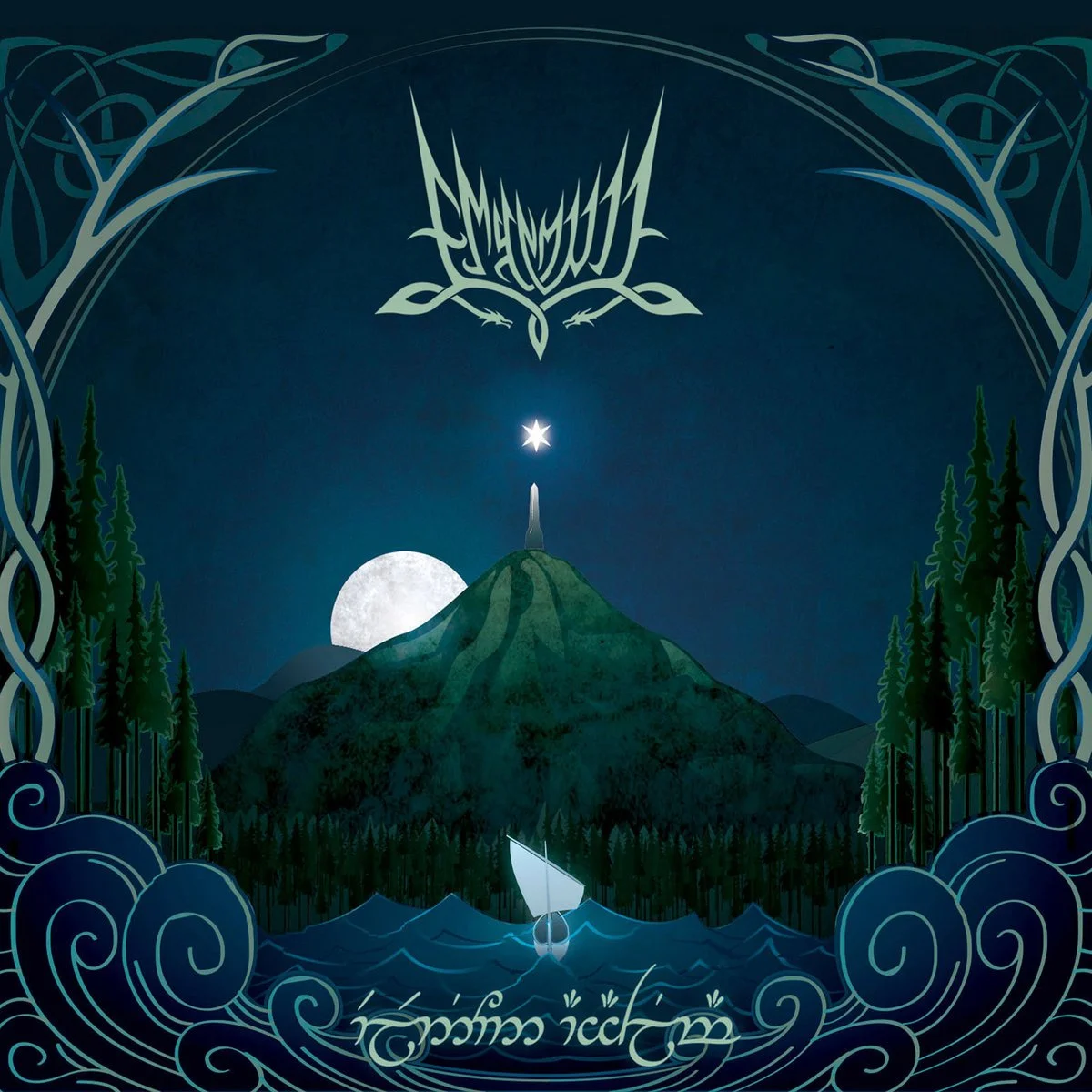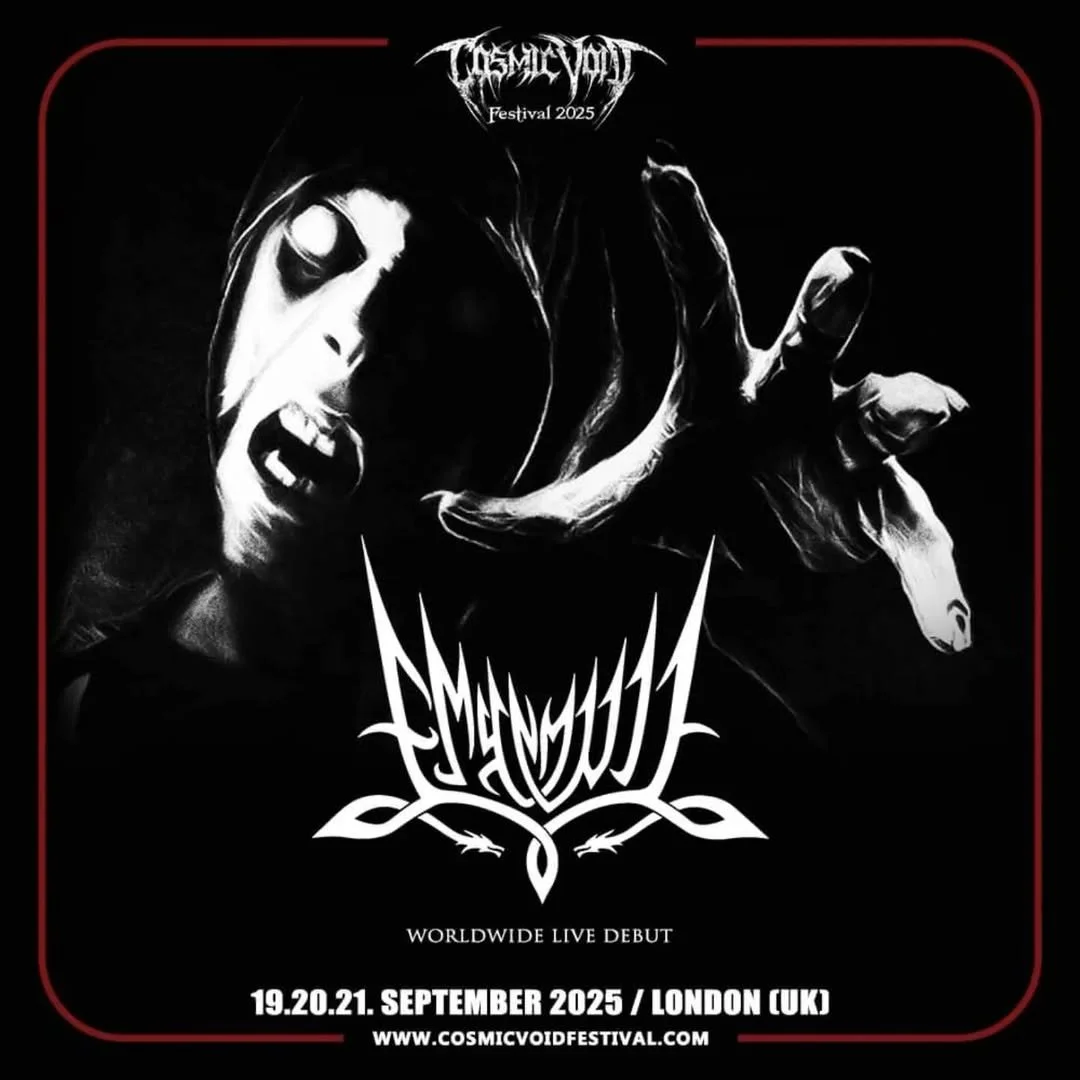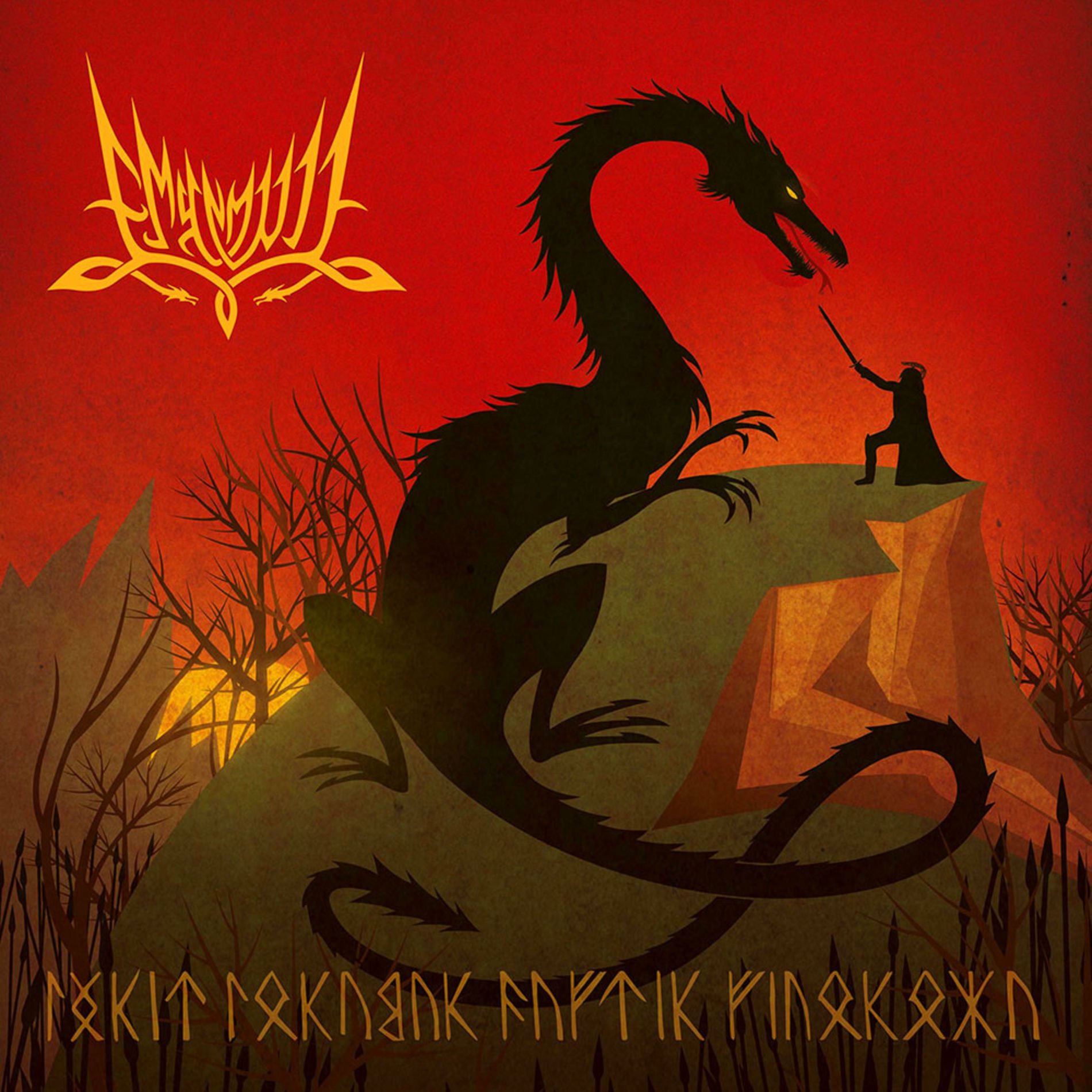
“Tolkien is not just an author; he’s an entire world to get lost in – and every Emyn Muil album is, in a way, an attempt to give back some of that wonder in sound form.”
EMYN MUIL
———————————
EXCLUSIVE INTERVIEW (2025)
———————————
Emerging in the early 2010s as an unusually fully formed and self-contained entity, Emyn Muil is the sole work of Italian musician Nartum – a multi-instrumentalist born Saverio Giove and also responsible for the bands Valtyr and Ymir. The project takes its name from a series of rugged, labyrinthine hills in Middle-earth. In fact, the entire project draws inspiration from Tolkien and his world-building, the music itself offering nods to the likes of Elffor, Druadan Forest, Caladan Brood, Falkenbach and, perhaps most prominently, Summoning themselves, with its epic, melodic, synth-heavy and soundtrack-esque take on black metal.
Releasing three albums between 2013 and 2020, Emyn Muil has earned a loyal following, but has taken something of a hiatus in recent times, the release of a ten-year anniversary vinyl boxset in 2023 being the only real sign of life in the last few years. That was, at least, before it was announced that the band would be making their live debut this year at the fourth incarnation of London’s mighty Cosmic Void festival. We sought some words with Nartum on this historical event as well as the past and possible future of the project.
[Shop for Emyn Muil at our main store by clicking HERE]
Cult Never Dies: Could you begin by giving us a little background on your history as a musician? How did you initially become interested in music, and in particular, extreme/black metal?
Nartum: “I discovered music with film soundtracks and the vinyl records that were around the house. I was always drawn to anything that evoked images and atmospheres – aesthetics and emotion. The more ‘extreme’ approach came later, during adolescence: black metal caught my attention not only for its sonic intensity, but especially for its evocative side and its ability to create its own world. From there, it became natural to look for a musical language that could blend epicness, darkness, and storytelling.”
At what point did you decide to start making your own creations using this musical language, and how did those earlier musical projects come about?
“I started composing music during high school. It was a time when I felt the need to give sonic shape to my imagination, which was already very oriented toward the epic and the fantastic. My very first real project was Ymir, born in 2008 with a first demo, followed by an album in 2010 that had a decidedly more ‘space ambient’ imprint compared to the classic Nordic sounds. It was an introspective, experimental work, but still coherent with an atmospheric and immersive vision. Later came Valtyr, where I explored a more pagan/epic black metal sound, inspired by Norse mythology and certain folk sonorities. Both projects helped me grow as a composer and producer and gave me the foundations, both technically and stylistically, to arrive clearly at the creation of Emyn Muil.”
What were your aims for Emyn Muil when you founded the project and were there any particular musical influences or inspirations at work at that time?
“Emyn Muil was born in 2012 out of a personal need. I felt the need for a project that could express a coherent vision between music, imagery, and storytelling. I wanted to create something almost ‘cinematic’, a bridge between dungeon synth, epic black metal, and soundtrack music. Among the musical influences are definitely Summoning, but also early Covenant, Moonsorrow, Windir, and Falkenbach. All bands that, despite their different approaches, managed to blend epicness, atmosphere, and storytelling. Emyn Muil is my personal venture into a mythical world, a way to give voice to the stories that have always inhabited my imagination.”
Unusually, you avoided releasing any demos for your new project and instead debuted with a fully conceived and remarkably professional-sounding album-length release, 2013’s Túrin Turambar Dagnir Glaurunga. What was the thinking there, and how easy was it to realise?
“Simply, I wasn’t interested in making a demo. When I started Emyn Muil, I already had a very clear idea of the sound, concept, and direction I wanted to take. It didn’t make sense to ‘test the waters’: I wanted to present something complete, solid, and self-explanatory. It was a risky choice, sure, but I felt it would be more effective. Working alone allowed me to take care of every detail, and thanks to Northern Silence’s support, the album had good exposure right from the start. It wasn’t easy, but it was definitely the right path for me.”
J. R. R. Tolkien’s writings have obviously provided the thematic foundation for all your works under the Emyn Muil name. Do you remember how you first discovered his writings and the initial impact it had upon you?
“It might be strange, but actually, I discovered Tolkien quite late, during my university years. But it was a meeting that left a deep mark. His ability to build a world with internal coherence, linguistic and symbolic depth, and such a rich mythology immediately captivated me. It was like finding a parallel universe that spoke the same language as the images and emotions I had inside. Since then, his imaginary world has become a constant source of inspiration for my music. Tolkien is not just an author; he’s an entire world to get lost in – and every Emyn Muil album is, in a way, an attempt to give back some of that wonder in sound form.”
Such lyrical and musical ambitions continued to be realised on the next two albums, 2017’s Elenion Ancalima and 2020’s Afar Angathfark, the songs contained there proving to be longer and more complex than on the debut . How do you personally feel the three records in the Emyn Muil discography compare to one another, and how do you judge your sound to have evolved over the course of these releases?
“I see these three albums as different stages of the same journey. Túrin Turambar Dagnir Glaurunga was a declaration of love for the novel it’s based on, with an atmosphere meant to evoke the solemnity of that story. With Elenion Ancalima, I tried to push things further, working with more elaborate structures, broader orchestrations, and a brighter, almost heroic kind of storytelling. Afar Angathfark, on the other hand, represents a return to darker and rawer tones, but with greater compositional awareness. Over time, I believe I’ve refined the balance between epicness and atmosphere, between melody and impact. I’ve always aimed to evolve in a natural way, while staying true to what Emyn Muil represents.”
At what point did you decide to finally bring Emyn Muil to the stage, and how did the forthcoming appearance at Cosmic Void come about?
“Bringing Emyn Muil to the stage was a decision I matured over time. For years, I considered this project to be strictly studio-based, very personal and tied to a solitary creative process. But I’ve always imagined sharing this vision with a live audience, giving physical form and voice to those atmospheres on stage. The contact with Cosmic Void came naturally, thanks to the interest of the organiser, who kindly offered to provide the musicians (without whom I wouldn’t have accepted). It’s a festival with a strong identity, one that supports several projects, like mine, that are performing live for the first time, so it felt like the perfect setting for this debut.”
How will you perform in terms of musicians and instrumental line-up?
“The live line-up will consist of six musicians, including myself. It will be a classic black metal setup: two guitars, bass, drums, keyboards, and vocals, with the addition of backing tracks to enhance the orchestral sequences and ambient passages. The goal is to recreate not only the power of the songs on stage, but also the cinematic and immersive component that’s so essential to my compositional approach.”
Is it a challenge to decide a setlist for such a show?
“Absolutely. Every Emyn Muil track is conceived as part of a journey and selecting only a few tracks inevitably means having to make sacrifices. I’m working on a setlist that represents the different phases of the project in a balanced way, from the more classic and atmospheric pieces to the more recent and aggressive ones. I want the audience to fully immerse themselves in the world of Emyn Muil, as if it were a rite, not just a performance.”
Are there any other bands playing the festival that you are keen to see, and what are your thoughts on visiting London for the event?
“Yes, there are several interesting bands, like Covenant and Absu, and I’m looking forward to seeing them live. I’m particularly interested in how certain acts bring their vision to the stage, especially those that, like me, focus more on atmosphere and concept than pure impact. As for London, it’s definitely a special destination and will be an important occasion for me, both as an artist and as a person. Bringing Emyn Muil to the homeland of the author whose novels inspired the project feels almost like closing a circle… or perhaps opening one?”
Before we conclude it would be remiss of me not to point out that it some five years since the release of Afar Angathfark – has work begun on a fourth release at all?
“It’s a difficult question to answer precisely. I do have some ideas, but the results so far haven’t been very satisfying, as increasing personal and professional commitments have left little room for the creative process. Emyn Muil is not a project that follows a strict schedule: each release must be born when there is something genuine to express. The fourth album, if it comes, will take a partially new direction, while keeping the project’s identity intact. Unfortunately, the wait will likely be long...”
Interview by Dayal Patterson.
Shop for Emyn Muil at our main store by clicking HERE
Cosmic Void tickets HERE

